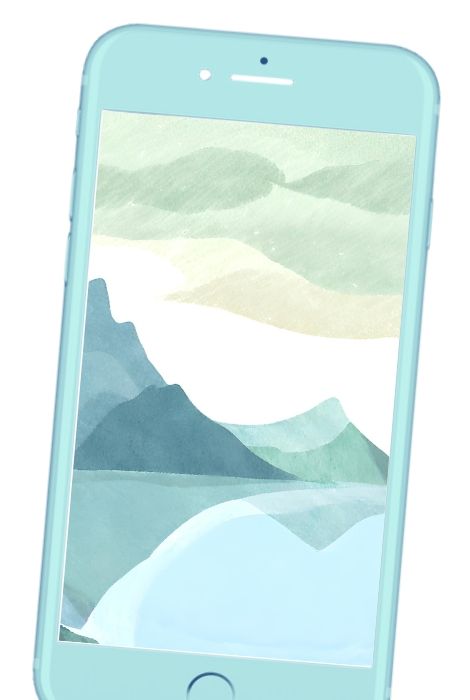Mindfulness Reboot: Sanctuaries, Square Breaths, & Not Screaming into the Void
Apr 21, 2025
Let’s just admit it: “mindfulness” got hijacked somewhere between corporate wellness brochures and that influencer telling you to breathe through your burnout - like that's a real thing. It’s now the go-to buzzword for everything from skincare to leadership coaching. Which is cute, but also deeply unhelpful when you're on the edge of a meltdown and someone hands you a sticker that says just be present. Even “be a goldfish” doesn’t land well when you need to be a goldfish.
So let’s bring it back to reality.
What is Mindfulness, Really?
Yes, there’s a dictionary definition. Yes, there are scientific articles and ancient texts. But here’s the version that doesn’t make your eyes glaze over:
Mindfulness is noticing what’s happening in the moment - inside you and around you - without judging it, fixing it, or freaking out about it.
It’s about presence. Not perfection. Not “doing it right.” Not turning into a radiant seafoam goddess who always feels serene. It’s being aware and kind to yourself in real time. Even when your to-do list is tap dancing on your frontal lobe and your inner critic sounds like a TikTok troll.
And here's the deal: mindfulness isn’t a lifestyle trend. It’s a set of skills. Just like learning to parallel park, do a pull-up, or figure out how Slack threads work.
Mindfulness Is Not...
- Zoning out. (That’s dissociation. Important distinction.)
- Being calm 24/7. (You’re not a lava lamp.)
- Meditating on a mountaintop. (But if that’s your thing - cool.)
- A spiritual flex or productivity hack.
It’s about being in your body, with your feelings, as they are. Even the weird ones.
Your Sanctuary: Grounding, Not Escaping
Let’s talk about the Sanctuary Exercise. No, this isn’t some cheesy meditation fantasy where you float away from your life. This is a grounding tool. It helps your nervous system settle down when it’s trying to convince you that everything is a crisis and you’re a failure. (Spoiler: you’re not.)
A Sanctuary is a mental location that feels calming, soothing, and secure. It's somewhere you can go in your imagination to practice breathing, regulation, and relief - especially if you're anxious, overwhelmed, or overstimulated.
👉 Script below or download here
You can use your Sanctuary when:
- You're in the middle of a stress spiral and need a lifeline.
- You're about to walk into a high-stakes meeting or conversation.
- You’re flooded with emotion and your brain forgets what words are.
- You're trying to fall asleep but your thoughts are on an espresso bender.
Important note: Sanctuary Exercises are not recommended if you're currently experiencing dissociation, intense trauma flashbacks, or don’t yet feel safe in your own mind or body. In those cases, talk with a trauma-informed professional first. Your safety comes first - always.
Psychological Safety Isn’t Just for Work
Psychological safety - originally a workplace term - matters just as much in your inner world as it does in team meetings. It’s the feeling that it’s okay to show up fully, speak your truth, make a mistake, or feel something big… without getting punished.
So ask yourself: Do I feel safe with myself?
If the answer is “um, not exactly,” mindfulness is a place to begin. Not with judgment. Not with fixing. But with noticing.
You deserve a relationship with yourself that includes:
- Room to breathe, even when you're overwhelmed.
- Permission to be imperfect.
- Curiosity instead of criticism.
Tools That Don’t Suck
Here are some of the mindfulness tools I love - and use myself (because we all need to breathe into a paper bag sometimes):
- Square Breathing
Inhale for 4, hold for 4, exhale for 4, hold for 4. Four times. It's like a nervous system reboot. Also: it works. Fast. - Stop. Breathe. Be.
From Dr. Aditi Nerurkar, a Harvard physician specializing in stress. I first heard it on The Mel Robbins Podcast Episode 248, this tool is simple and sneaky-effective: - STOP whatever you're doing - mentally, physically, emotionally. Interrupt the autopilot.
- BREATHE slowly, just one deep breath.
- BE in the moment. Feel your body, your breath, the ground. That’s it. It’s a micro-intervention. A brain break. No apps, no incense, no performance. Just enough to bring you back to you.
- Sensory Soothing Kit
Think: cozy socks, chai tea, eucalyptus lotion, a smooth stone, photos of your favorite trip, or pink noise in your headphones. Keep it near. Make it yours. - Mindful Walking
No phones, no podcasts. Just walk. Look at the trees. Feel your feet. Smell the air. Bonus if you're walking a dog and letting them lead (dogs are basically mindfulness Zen masters with toe beans). - Act Like Your Dog
Lie down, breathe, look around, be curious. Ignore your to-do list. Bonus points if you do this while your dog stares at you like you’ve lost it. You haven’t. You’ve found something. - Sanctuary Exercise
Download it. Practice it. Come back to it when the world feels like too much. It’s your brain’s version of a warm blanket and a locked door.
Grounding Isn’t Glamorous - and That’s the Point
Look, healing doesn’t always feel inspiring. Sometimes it’s just not losing it when you spill your coffee or someone emails “per my last message.” Grounding practices aren’t flashy. They’re repetitive. They’re subtle. They’re powerful as hell.
So start small. Breathe. Name five things you see. Feel your feet. Use your senses to anchor in reality. That’s how you reclaim yourself.
Want More? Resources & Links
Here’s a handful of favorites if you want to dig deeper:
- Self-Compassion: The Proven Power of Being Kind to Yourself by Dr. Kristin Neff
- Mindfulness 101 - July 2022
- Breathing exercises like square breathing
- Ten Percent Happier Podcast
- The Body Keeps the Score by Bessel van der Kolk - this one is a little academic and could be triggering, but is a really important book in the realm of trauma treatment and research
- Psychological Safety: Why It Matters and How to Create It (Harvard Business Review)
- Verywell Mind’s Grounding Techniques for Anxiety
- For those interested in exploring more of Dr. Nerurkar's work, consider "We are Human Beings, Not Human Doings"
Or come hang out with me on [Instagram] or [Threads] and tell me about your Sanctuary. Bonus points if it involves fairy lights, a weighted blanket, or a very judgmental cat.
Want more personalized help creating a toolkit that works for your brain, your body, and your reality?
Book a consult with me here. Because you don’t have to figure this out alone.



